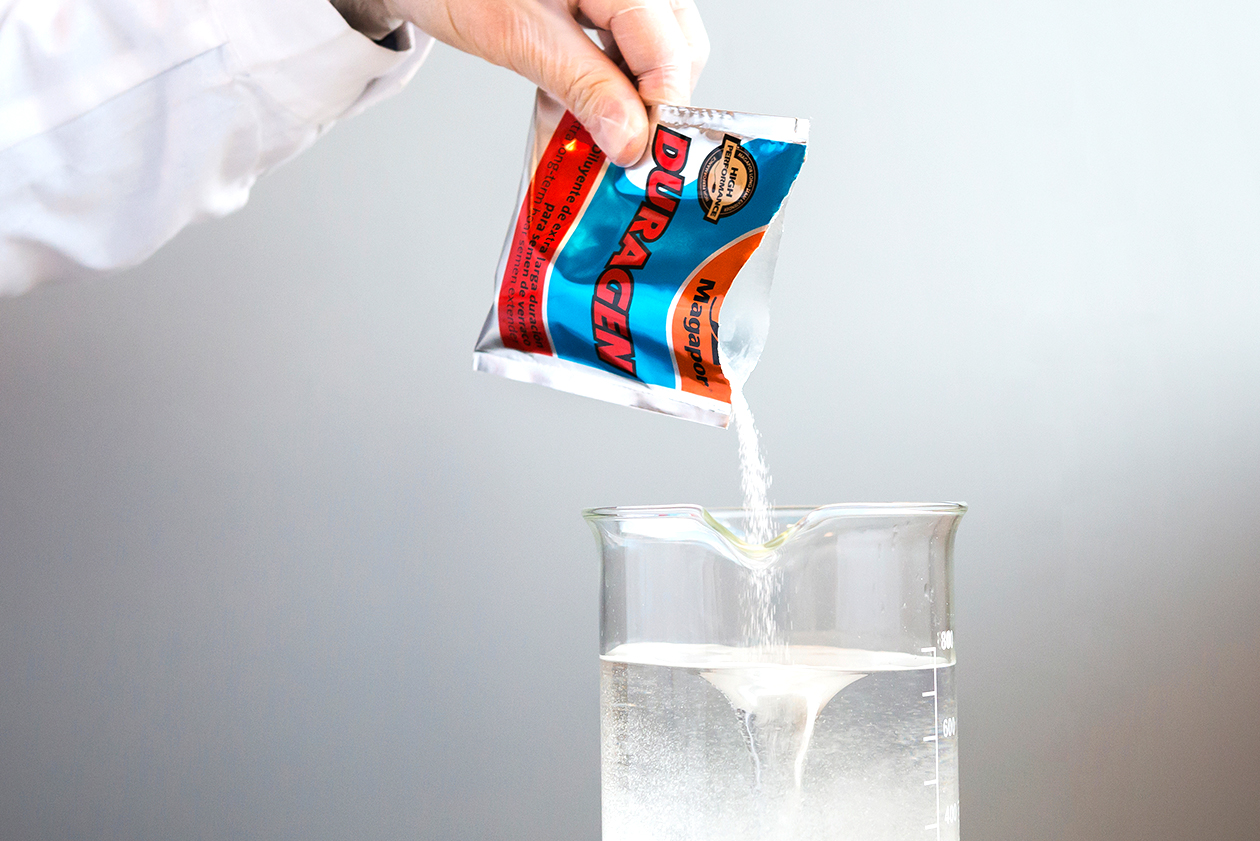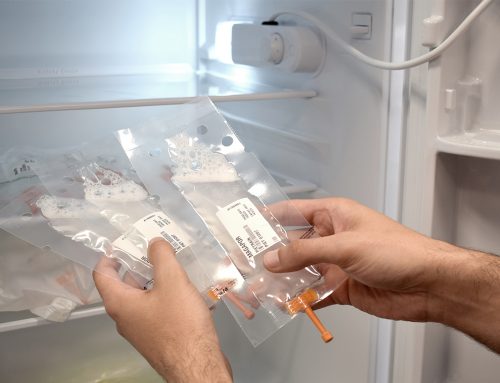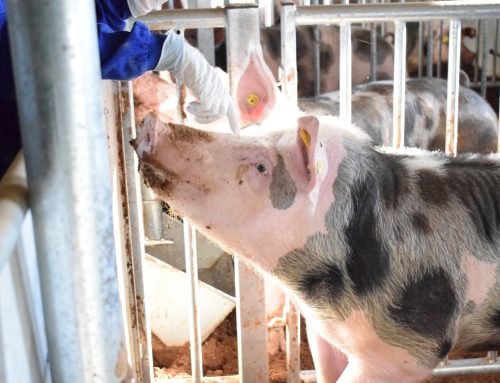In today’s post we go back to the technical articles that our R&D Veterinary department writes, and we will continue with the tips for a correct dilution that we began in February.
In that entry “Tips I”, our colleague Joaquin Miguell explained the physiological reasons why the swine sperm is so sensitive to temperature fluctuations, and why the optimal range for its preservation is between 15-17ºC.
Thus, this time we will address the different dilution techniques (1 step isothermal dilution, 2-step hypothermic dilution).
Generally, once the collection of the semen is done, it is analyzed at the laboratory and diluted with the extender at a temperature similar to that of the ejaculate (between 33-37ºC) . The difference of temperature should be between ± 1 or 2 ºC , because of the reasons mentioned in the previous entry. It is 1-STEP ISOTHERMAL DILUTION.
With the evolution of the swine sector, new working methods and needs have arisen in boar studs, such as satellite laboratories where ejaculates from different locations are processed. Then, they must be transported with a previous dilution (semen ratio 1: 1 or 1: 2) for its preservation and protection during the journey to the laboratory and final processing.
Another change has been the increase in the size of boar studs and the rise in the number of doses to be produced on certain days, (usually on Sundays or Mondays and Thursdays). It causes that the doses produced from the last collected ejaculates do not have enough time to reach the conservation temperature, prior to transport to the destination farms. As we commented in the previous entry, we must make the sperm reach the temperature of 15-17ºC, since it is in this range that the metabolic activity of the sperm is minimized. So it is essential.
Although the transportation may be cool and/or with controlled temperature, it is very complicated that if the doses have not previously reached the target temperature, they do so during the journey. These chambers maintain the temperature, but they do not make it decrease, since that its capacity is much smaller than the preserving chambers that exist in the boar studs. If the delivery was made using parcel service, the scenario would be even worse.
As a result, new forms of work have emerged. They allow us to face the challenges that appear in insemination centers:
- transportation of ejaculates to the processing centers
- fast reduction of temperature prior to transport
TWO-STEPS HYPOTHERMIC DILUTION
It is a technique that entails making a first dilution of the ejaculate once it is collected, adding extender at the same temperature, in a 1: 1 or 1: 2 ratio. Then, the resulting mixture is left at lab ambient temperature for about 20-30 minutes with the aim of decreasing the temperature.
With this first dilution, the extender protects the cell membranes. This waiting time (20-30 min) until the second dilution allows the components of the extender to protect the sperm from the thermal shock that the sperm would suffer when it comes into contact with a medium at a temperature 7-10ºC lower. Once this time has passed, the final dilution is carried out, adding the final volume of extender with a temperature between 21-25ºC.
In the case of having to be taken to a central laboratory, ejaculates diluted 1: 1 or 1: 2 will be carried in isothermal boxes so that there are no temperature fluctuations during transport. Once they reach their destination, the processing will be finished with the addition of the extender at room temperature.
A point to keep in mind when performing this technique is the fact that the type of extender used can influence on the results obtained. We mean:
- With short-term extenders the quality or preservation of these seminal doses could be affected, as their composition lacks of membrane protectors, antioxidants, … which, in contrast, are included in the long-term extender and in high performance ones .
- Depending on the type of energy substrate the extenders use, they can not provide a nutritious supply to the sperm-cells during the time they remain in 1: 1 or 1: 2 dilution (with special importance when transporting them, and their final dilution may last more than 1 hour).
These new techniques or work methods, together with the high performance extenders, allow getting adapted to the new requirements of production for insemination and the swine sector, without compromising the quality of the seminal doses. They also allow the ejaculates to make the journey to the processing center and reach the conservation temperature in a faster way in order to transport the doses.
In the next and last entry (Tips for dilution III), we will address the addition of semen to the extender or extender to semen, and strategies to lower the temperature of the doses.




